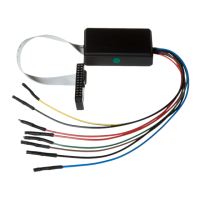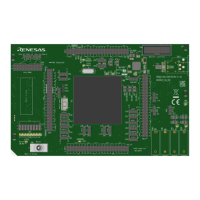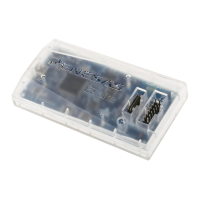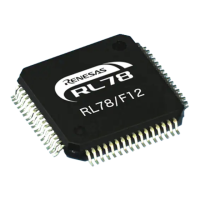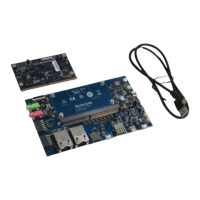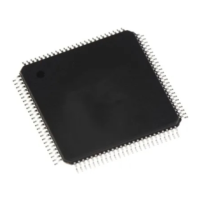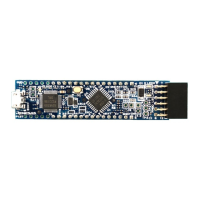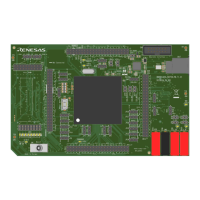A-D Converter
M30240 Group
Rev.1.00 Sep 24, 2003 Page 245 of 360
2.6.3 Precautions
Connect a capacitor between: the Vref pin and the AVss pin; AVcc pin and AVss pin; and each analog
input pin and AVss pin.
• Write to each bit (except bit 6) of A-D control register 0, to each bit of A-D control register 1, and to
bit 0 of A-D control register 2 when A-D conversion is stopped (before a trigger occurs). In particular,
when the Vref connection bit is changed from “0” to “1”, start A-D conversion after an elapse of 1µs
or longer.
• When changing A-D operation mode, select analog input pin again.
• Using one-shot mode or single sweep mode
Read the corresponding A-D register after confirming the A-D conversion is finished. (It is known by A-D con-
version interrupt request bit.)
• Using repeat mode, repeat sweep mode 0 or repeat sweep mode 1
Use the undivided main clock as the internal CPU clock.
Figure 2.92: Capacitor usage to reduce noise
To reduce the possibility of noise problems:
• Connect a bypass capacitor (approximately 0.1 µF) across the Vss pin and the Vcc pin with the short-
est possible wiring
• Use circuit traces with a larger diameter than other signal traces for Vss and Vcc.
Vpp connection of One-time PROM version
• The Vpp (power input for PROM programming) connection for the internal PROM is connected to the
CNVss pin on the One-time PROM version. Therefore, CNVss should be a short circuit trace to im-
prove noise resistance. If the CNVss trace is long, insert a 5kΩ resistor close to the CNVss pin and
connect it to Vss.
Note: Inserting a 5kΩ resistor will not cause any problem when switching to a mask ROM version.
AV SS
AV CC
VREF
ANi
Microcomputer
C1 C2
C3
C1 0.47 µF, C2 0.47 µF, C3 100 pF
(for reference)
Use thick and shortest possible wiring
to connect capacitors.
Note
1:
Note 2:
VCC

